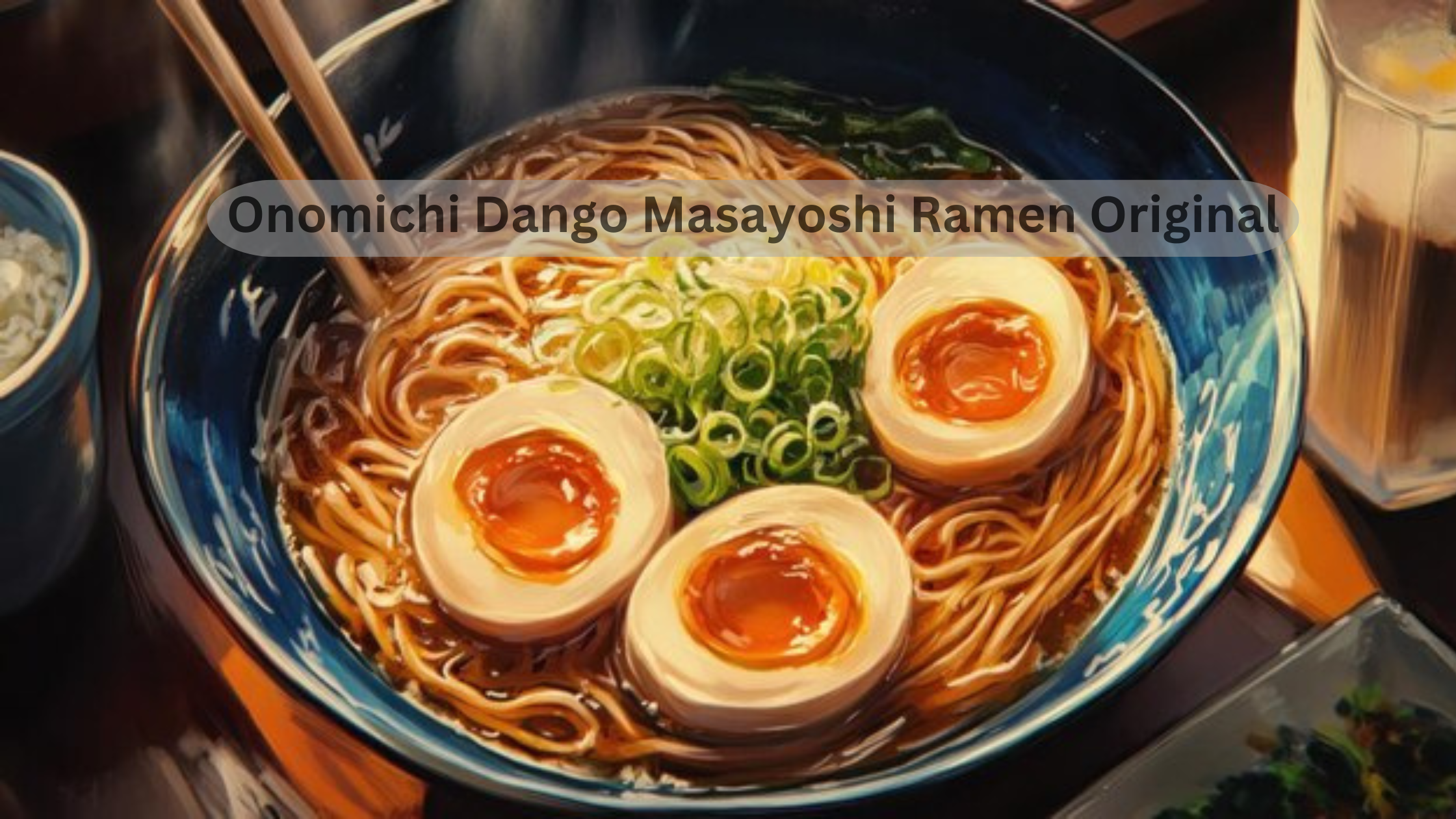Onomichi dango masayoshi ramen original is not just a dish; it’s an experience that transports you to the heart of Japanese cuisine. This flavorful bowl, rooted in the traditions of Onomichi, combines savory broth, chewy noodles, and unique toppings that set it apart from other ramen varieties. In this article, we will dive deep into the origins, preparation, and distinct elements that make Onomichi dango masayoshi ramen original a must-try for food lovers.
Onomichi Dango Masayoshi Ramen Original: The History Behind the Dish
Onomichi dango masayoshi ramen original has its roots in the coastal town of Onomichi, located in Hiroshima Prefecture, Japan. Known for its rich food culture, Onomichi has long been a place where ramen lovers flock to experience its signature dishes.
What makes this ramen unique is the combination of dango (rice dumplings) and the traditional ramen elements, offering a delightful mix of textures and flavors.
The dish is believed to have been popularized by Masayoshi, a local chef who wanted to blend traditional ramen with the regional specialty of dango. Over time, this fusion has become a staple in the area, celebrated for its originality and flavor.
Key Ingredients in Onomichi Dango Masayoshi Ramen Original
The ingredients of Onomichi dango masayoshi ramen original are what give it its distinctive taste. The broth is typically made from a base of soy sauce or fish stock, infused with flavors from vegetables and meats. The noodles used are thin and firm, perfect for absorbing the flavorful broth without becoming soggy.
The addition of dango—soft, chewy rice dumplings—is what sets this ramen apart from others. Toppings such as green onions, seaweed, and bamboo shoots are also added, offering a balance of textures and tastes. The combination of these elements creates a ramen dish that is both comforting and exciting.
How Onomichi Dango Masayoshi Ramen Original Stands Out from Other Ramen Dishes
What makes Onomichi dango masayoshi ramen original stand out is the incorporation of dango, a traditional Japanese sweet or savory dumpling. In this dish, the dango is used in a savory context, adding a new dimension to the ramen.
This blending of traditional ramen elements with local specialties highlights the innovative spirit of Japanese cuisine.
The broth of Onomichi dango masayoshi ramen original is also distinct. Unlike the richer, pork-based broths of other ramen varieties, the Onomichi version uses a lighter soy-based or fish broth. This creates a refreshing yet savory taste, perfect for those who prefer a less fatty meal.
The Influence of Onomichi Culture on Onomichi Dango Masayoshi Ramen Original
Onomichi, a port town, has a rich culinary history shaped by its location by the Seto Inland Sea. The seafood influence is evident in the flavors of Onomichi dango masayoshi ramen original, with fish stock often used in the broth. Additionally, the town’s tradition of making dango has influenced the addition of this unique ingredient to the ramen.
The fusion of seafood flavors and traditional ingredients reflects the town’s deep connection to its culinary roots. Visitors to Onomichi often seek out this particular ramen as a way to experience the local culture through food.
Preparing Onomichi Dango Masayoshi Ramen Original at Home
For those who want to try making Onomichi dango masayoshi ramen original at home, the process is relatively simple, though it requires attention to detail.
Start by preparing the broth using soy sauce, fish stock, or a combination of both. Simmer the broth with onions, garlic, and ginger to infuse it with deep flavor.
Next, prepare the dango by mixing rice flour with water and rolling the dough into small balls. Boil the dango until they float to the surface, indicating they’re fully cooked. Cook the ramen noodles separately, ensuring they remain firm.
Assemble the dish by placing the noodles in a bowl, ladling the broth over them, and adding the dango. Top with green onions, seaweed, and any other desired toppings.
Where to Find Authentic Onomichi Dango Masayoshi Ramen Original
While Onomichi dango masayoshi ramen original can be recreated at home, there’s nothing like experiencing it in its place of origin. Several restaurants in Onomichi specialize in this unique ramen, offering variations that highlight local ingredients and traditional preparation methods.
Many ramen shops in Onomichi offer this dish as a signature item on their menu. Visiting the town and trying the ramen in its authentic setting provides an opportunity to appreciate the full depth of its flavor and cultural significance.
Onomichi Dango Masayoshi Ramen Original: A Growing Trend in Japanese Cuisine
Over the years, Onomichi dango masayoshi ramen original has gained popularity not only in Onomichi but also across Japan. The fusion of dango and ramen has caught the attention of food enthusiasts who are eager to try this innovative dish.
As Japanese cuisine continues to evolve and expand globally, dishes like Onomichi dango masayoshi ramen original play a significant role in showcasing the diversity and creativity of Japanese food.
More restaurants are incorporating unique regional ingredients into their menus, making traditional dishes more accessible to a wider audience.
Conclusion: Why Onomichi Dango Masayoshi Ramen Original is a Must-Try
Onomichi dango masayoshi ramen original is a perfect example of how regional cuisine can offer something truly special. The combination of chewy dango and savory ramen creates a dish that is both comforting and innovative. Whether you’re a ramen enthusiast or just someone looking to try something new, this dish is a must-try.
Its deep connection to Onomichi’s culture and culinary traditions makes it more than just a meal—it’s an experience. Whether enjoyed at home or in a traditional ramen shop in Onomichi, Onomichi dango masayoshi ramen original offers a unique taste of Japan’s food heritage.
4o








